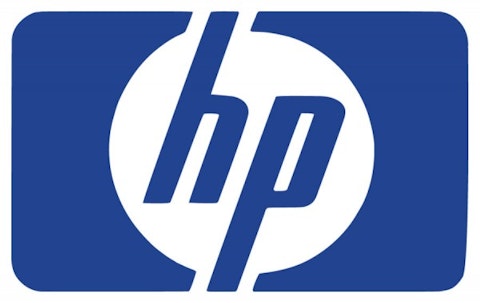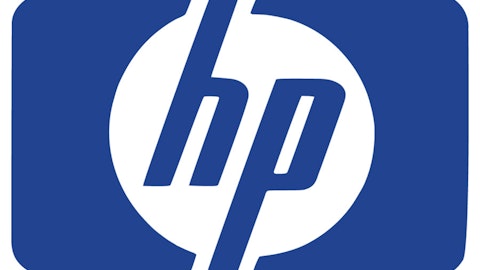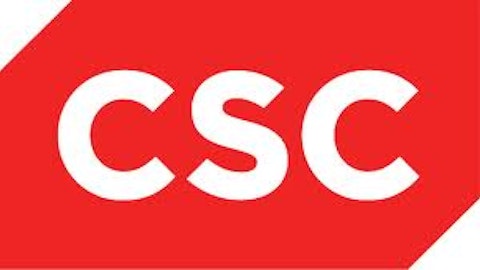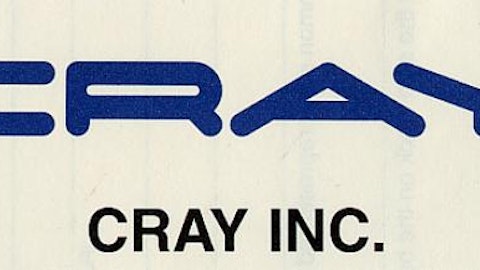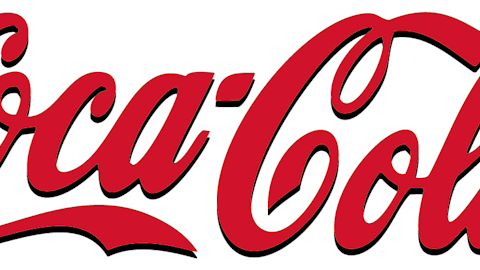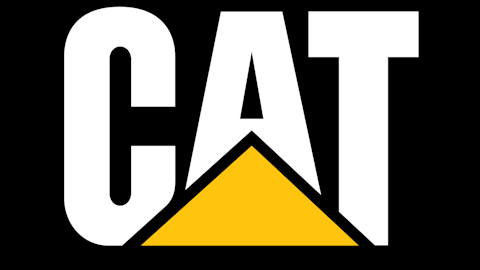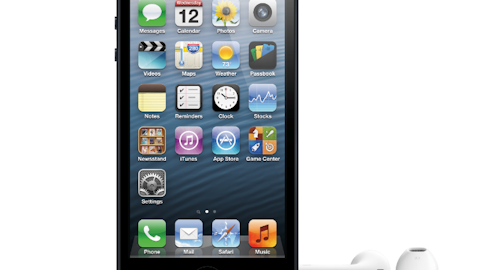The woes of the PC industry are well known, and the situation isn’t getting any better. The research firm IDC has shown a 13.9% drop in global PC sales to 76.3 million units in the first quarter of 2013, almost twice as big as the estimated decline of 7.7%.
Despite the fall in the PC industry, the Chinese smartphone and computer manufacturer Lenovo has continued to rise and is the only vendor among the world’s top 5 leading firms in this industry that has managed to avoid this global downfall. The company has been closing the gap between itself and the world’s biggest computer maker Hewlett-Packard Company (NYSE:HPQ), which is still on top with 15.7% of market share in the PC industry despite having fallen from 17.7% a year ago. In contrast, Lenovo has raised its market share to 15.3%. Dell Inc. (NASDAQ:DELL) comes in at third place with an 11.8% market share.

Hewlett-Packard Company (NYSE:HPQ) has recently reported its quarterly results for the three months ending April 30, 2013. Its revenues dropped by 10.1% to $27.6 billion, while income fell 32.4% to $1.08 billion or $0.55 per share. This translated into adjusted earnings of $0.87 per share, which was above the analysts’ estimate of $0.81 per share. However, the company’s top-line revenues were below the market’s expectations of $28.12 billion.
The falling sales came on the back of weak PC demand, but due to effective cost cutting and debt reduction, the company was able to beat the earnings estimates.
Hewlett-Packard Company (NYSE:HPQ)’s notebook and PC shipments dropped by 24% and 18%, respectively, from the comparable quarter last year. During the quarter, HP successfully cut down its total expenses and costs by 9% to $25.6 billion.
In the previous quarter, Hewlett-Packard Company (NYSE:HPQ) saw an across-the-board decline in sales, with two exceptions where it witnessed a modest increase.
1. In the Printing segment, sales of printing supplies rose 2% to $4.12 billion
2. In the Enterprise Group, networking equipment sales rose 1% to $618 million.
Overall, however, revenues in Enterprise Group fell by 11% as the sales of Industry Standard Server products dropped by 12% to $2.8 billion due to price competition from Dell Inc. (NASDAQ:DELL).
| Businesses | 2012(In Million) | 2013(In Million) | % Change |
|---|---|---|---|
| Personal Systems | $9,470 | $7,584 | -24.9% |
| Printing | $6,132 | $6,081 | -0.8% |
| Enterprise Group | $7,546 | $6,819 | -10.7% |
| Enterprise Services | $6,489 | $5,999 | -8.2% |
| Software | $970 | $941 | -3.1% |
| HP Financial Services | $968 | $881 | -9.9% |
| Corporate Investments | $7 | $10 | 30.0% |
Lenovo increases revenues to record highs
Lenovo also announced its earnings earlier for the fourth quarter ending March 31, 2013, and they seem to defy the gloom surrounding the PC industry. The company’s revenues increased by 4.5% to a record level of $7.83 billion while its income increased by an impressive 89.6% to $127 million. This growth in earnings was credited to better control costs, an increase in shipments, favorable pricing and the company’s mobile division.
I believe that the increase in sales was particularly impressive because the revenues from laptop and desktop, which forms more than 80% of the group’s total sales, have actually fallen. The growth in PC shipments is modest at best, but it is considerably better than the industry trends. The group’s mobile segment has pulled off another stellar performance.
Sales in Lenovo’s laptop business, which contributes around 53% of Lenovo’s revenues, decreased 2% year-over-year to $4.2 billion while Lenovo’s shipments increased by 0.4% as opposed to industry’s decline of 14.2%. Desktop PC sales, which account for 30% of total sales, declined 2% year-over-year to $2.4 billion in the first quarter while desktop shipments were flat as opposed to industry’s decline of 12.2%. In China, Lenovo now enjoys an enormous PC market share of 34.6% and shows a year-over-year increase of 2.6 percentage points.
In Lenovo’s Mobile Internet Digital Home (MIDH) division, sales rose by 74% to $736 million. Here, the smartphone shipment grew by a massive 206% in the quarter as compared to last year, putting Lenovo far ahead of China’s comparable smartphone market growth of 117%. As a result, the company ended up increasing its market share by 3.5 share points year-over-year to 13%.
Lenovo announced several new smartphones in the quarter, including the Android-based K900 phone with a stainless steel alloy and polycarbonate case which is just 6.9mm thick with a 5.5-inch display and an Intel Atom Z2580 2.0 GHz dual-core processor. The metal finish will add a bit of weight to the phone, increasing it to 162 grams, making it heavier than HTC’s One, Samsung’s Galaxy S4 and Apple Inc. (NASDAQ:AAPL)’s iPhone 5.
A little more than a year ago, Lenovo became the second biggest player in China’s smartphone market by surpassing Coolpad. Since then, the company has been improving on its lead and is still the second leading player behind Samsung which has a market share of 17.1%.
For Lenovo, the company’s smartphone segment is increasing its contribution to the top line while both desktop and laptops are doing the opposite; this is mainly due to the phenomenal growth of MIDH segment, however. This trend is expected to continue in the coming years. I believe that the lull in PC sales will eventually hit Lenovo, as revenues are already down from last year. But the company has been able to successfully diversify itself into smartphones and this unit has the potential to offset the downfall of PC. I fully expect Lenovo to continue increasing its market share in the coming years and I am long-term bullish on this company.
On the other hand, Hewlett-Packard Company (NYSE:HPQ) believes that it will take it five years to execute its plans and turnaround the company. HP has a long and challenging road ahead following the disastrous acquisition of Autonomy. The shuffling of its top management, with four departures in 2011 followed by five new faces, is still ongoing as it is looking for a “world-class chairman.” Given the current state that the company is in, I have my doubts over its ability to attract any “world-class” individual. Its investors haven’t seen any top-line quarterly growth in the last two years. Drastic cost-cutting initiatives, such as the planned 29,000 job cuts by 2014, are going to drive its earnings and HP itself is not expecting any revenue growth until then.
On a positive note, Hewlett-Packard Company (NYSE:HPQ)’s income and cash generated from investors was greater than analysts’ expectations. This, coupled with the revenue decline, indicated that the company is willing to forego revenue growth to protect its income, which given the current circumstances is a step in the right direction. Investors should note that although HP’s shares have risen by more than 90% in the last six months, the stock still trades just 6.9 times its full-year forward price-to-earnings ratio. There are too many negatives and uncertainties surrounding this company, however, some of which have been discussed above. Therefore, I would not recommend HP.
Sarfaraz Khan has no position in any stocks mentioned. The Motley Fool has no position in any of the stocks mentioned. Sarfaraz is a member of The Motley Fool Blog Network — entries represent the personal opinion of the blogger and are not formally edited.
The article Contrasting the Performance of Two PC Giants originally appeared on Fool.com and is written by Sarfaraz Khan.
Copyright © 1995 – 2013 The Motley Fool, LLC. All rights reserved. The Motley Fool has a disclosure policy.
